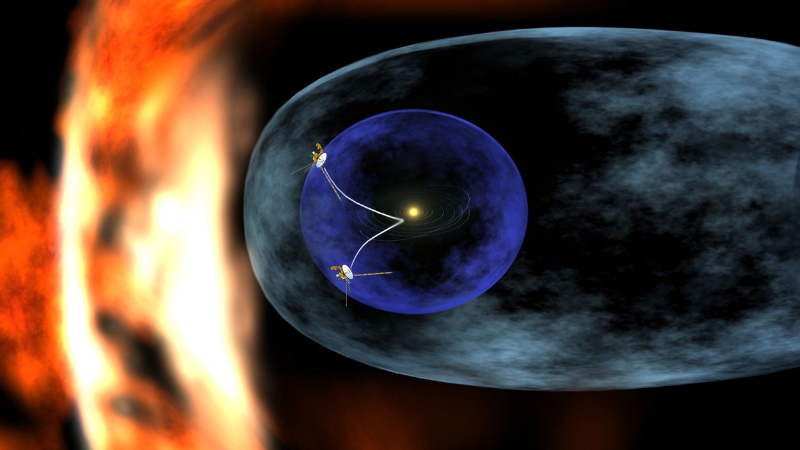In 1609, Galileo opened the world’s eyes to a whole new vista of the intricate beauty of the cosmos through the telescope. Prior to this, we had assumed that the 5 naked-eye visible planets, Mercury, Venus, Mars, Jupiter, and Saturn, along with the Earth, all enclosed within a thin glass shell enveloping us in a layer of sparkling stars, constituted the entirety of the universe.
Today we know that beyond our own solar system lie hundreds of billions of hundreds of billions (no, that’s not a typo!) of stars, many of which have their own system of planets surrounding them. Our own Milky Way galaxy is also only one of hundreds of billions of galaxies, each of which are home to countless more stars and planets. Our understanding of the universe has literally expanded exponentially over the last 400 years. And soon our experience of it will also.
The twin Voyager spacecraft–launched in 1977–have been traveling throughout our solar system ever since. Originally only designed for five years of operation, Voyager 1 and 2 spent 12 years studying Jupiter, Saturn, Uranus and Neptune, as well as 48 of their moons. Upon completing their planetary tour, they were left to continue travelling on out toward interstellar space. After 35 years of travel, the twin spacecraft are now approaching the very edge of our solar system and are about to enter a truly brand new frontier of the universe for mankind.
It may seem a somber, lonely picture to imagine two unmanned spacecraft leaving behind our vibrant solar system and entering the vast and relatively empty expanse of interstellar space. But we remember that nothing in God’s creation is beyond his love, faithfulness or providence. As the Voyager spacecraft explore beyond our solar system by continuing to send back scientific data, they will continue to provide us with a new vantage point from which to observe and experience our little corner of the universe. Indeed, through them our appreciation for the vastness of God’s creation and the blessing of our own rare planet will only increase.





